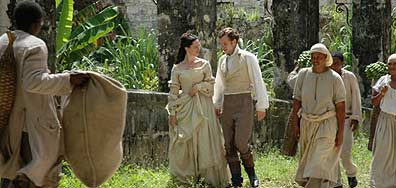In my opinion, our trip to Wilson Library was well worth the time. Throughout my high school career, I was never introduced to the complex ways in which a book is made. Of course I knew the basics, but I did not think about why the particular fonts and bindings were chosen by the author for each book. It was very interesting to learn about the various books and materials that were on display, and to understand why they are so important and still learned about today.
My group was able to look at three books that we thought were appealing. Out of the ones we looked at, my favorite was Frankenstein, the Paperback 472 version. The first question we answered about the book asked about how the front and back covers of the book represented Frankenstein visually and textually. As I compared the cover of this version of the text to the one we just finished in class, I realized how much more intriguing this book appeared. The cover showed the part of the story where the Monster kills Elizabeth and she is sprawled out on the bed. In the background of the cover, the Monster was looking down at his hands with an expression that made it look like he was sorry for what he had done. This graphic could make people view the Monster differently before reading the book. As we read the 1918 version of Frankenstein in class, I understood it as that the Monster was not at all sorry for killing the people Victor loved. From looking at the cover of the Paperback 472 version, I would not have gotten the same feeling about the Monster. It was really interesting to compare these two editions, and understand why the authors chose the covers and how they wanted people to view the Monster itself.
The other document we looked at was the Sherlock Holmes comic book, called Hound of the Baskervilles. Growing up as a kid, I only knew Sherlock Holmes as a detective. Although I did not watch any of the Sherlock Holmes movies, there were always allusions to Sherlock Holmes on other TV shows when someone acted as a detective. With this in mind, it was different to see the pictures of Holmes in the comic book holding a gun. I have never thought of a detective as someone who “fights off the bad guys,” so this put a completely different image in my head of who Holmes was. I personally think that this comic book’s depiction of Holmes could seem more compelling to people, and especially young children. I even enjoyed looking at all the graphics and fonts that were used, and seeing how the pictures of Holmes would change how he is viewed.
Overall, I was well pleased with the experience at Wilson, and how well everything was explained. It has definitely changed the way I look at the fonts, bindings, pictures, and much more that go into making a book. I never realized how tedious of a process it must be for authors to choose the perfect art or material to use, and I now understand how proud they must be when finally finishing their book.

